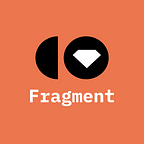As NFT market shows signs of fizzling, new project emerges looking to reinvigorate with secondary markets
“The NFT bubble may be bursting already” reads a recent headline from CNN.
The fact that publications like CNN are reporting on the vicissitudes of the NFT economy is a testament in and of itself of how much that economy has grown.
In the past year, NFTs have risen from a niche interest in defi to a booming market capturing the attention of people all over the world. The first inroads were made in the art world. NFTs were a logical means for artists to connect with new audiences and explore new mediums while simultaneously cutting out the middlemen that have accumulated so much wealth and power in the traditional art world.
As interest in the new means of exchange grew, the prices followed suit. Beeple, a digital artist that creates NFTs, was virtually unknown a year ago.
Prior to October, the most one of his artworks had ever fetched was $100. At the beginning of March Beeple sold one of his NFT artworks for $69 million.
The NFT effect has hit other industries as well. Famous athletes have sold their highlights as NFTs, musicians have sold NFT versions of their songs, and even newspapers have gotten in on the action with the NY Times selling one of its articles devoted to NFTs as an NFT. The NFT article sold for a measly $560,000.
Is the bubble popping?
But recently there have been signs that the NFT market might be fading as quickly as it ascended. Over the past month, sales of NFT art have dropped by around 70%. While some experts have opined that the slump is temporary, it is fair to say that concerns over the staying power of the NFT economy have merit.
The truth is, the NFT paradigm is fundamentally limited. Sure, it has opened up pathways for more artists to receive more compensation for their work and introduced them to new audiences. Likewise, it has at least presented the possibility that it could be used to rebalance aspects of the music industry in favor of artists. But most of what has been appealing about NFTs — outside the outrageous price tags — has been in their potential.
Once you buy an NFT what comes next? You own the rights to a digital work of art, but what can you do with them? As it stands now, you can either look at your purchase as a long-term investment with an eye on it accruing value over time, or you can try and turn around and sell it quickly if you think the price could rise again. Outside of that, there aren’t many options, and that’s not exactly a recipe for sustainable success.
A new solution, a new paradigm
A new defi project has set out to open up the horizons of the industry.
Fragment.protocol is a platform currently in development that has figured out a way to create secondary markets in the NFT economy.
The underlying idea of the platform is pretty straightforward. As its name alludes to, users of the platform can fragment their tokens into smaller pieces. The way this is achieved is first by freezing the NFT. Each NFT on fragment gets frozen on the Ethereum network. Once an NFT is frozen an analog is created on the Binance Smart Chain.
With their analogs on BSC, fragment users can divide their NFTs into however many pieces they want which will be minted as unique tokens. From there, the possibilities are only limited by the possibilities of the greater defi network. The fraction tokens can be used in fundraising, trading, lending, staking, borrowing, etc.
New buyers and a liquidity injection
That is just from the perspective of the NFT owner. The other means by which fragment plans on revolutionizing the NFT space is by lowering the entry price threshold. Something that has been lost in all the buzz about the NFT boom is that astronomically high prices are great, but only for those who can afford them. By fractionalizing NFTs, fragment.protocol opens up a whole secondary market for people unable or unwilling to pay high prices.
If we go back to that Beeple NFT that sold for $69 million, that same NFT could be frozen and fragmented. The owner could then sell the newly minted analog tokens as slices of ownership equity in the original NFT. Not only would there likely be considerable interest among potential buyers, the analog tokens would have their own future resale value.
The beauty of the platform linking the Ethereum network with the Binance Smart Chain is that transactions with the BSC tokens would not require fees anywhere near the price range of the pesky Ethereum gas fees. Additionally, users can set up trading pairs with their newly minted tokens on any decentralized exchange.
The new users brought into the NFT market due to the lower price threshold and increased possibilities would translate to a significant influx of new liquidity. More liquidity would do wonders for the NFT space, adding much-needed stability and normalizing the price discovery process.
As concerns mount over the viability of the NFT market as a long-term defi sector, fragment.protocol has appeared at seemingly just the right time. If the platform is able to make good on its potential and realize its vision, it could lead to a complete reconfiguration of the industry.
